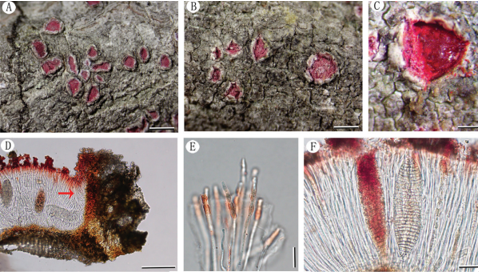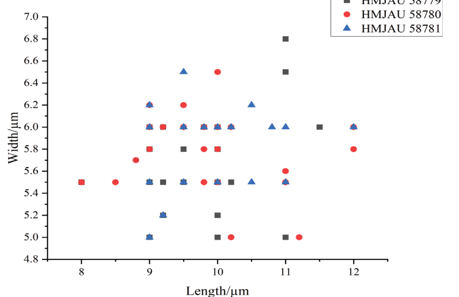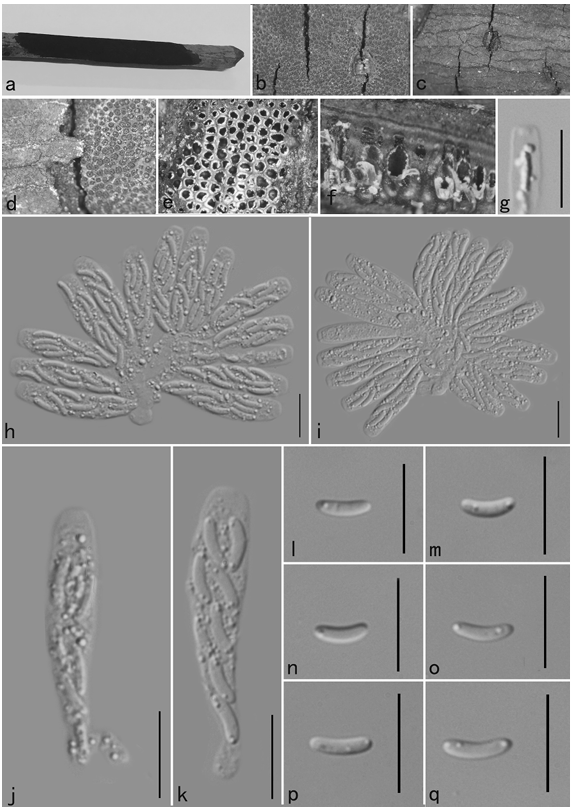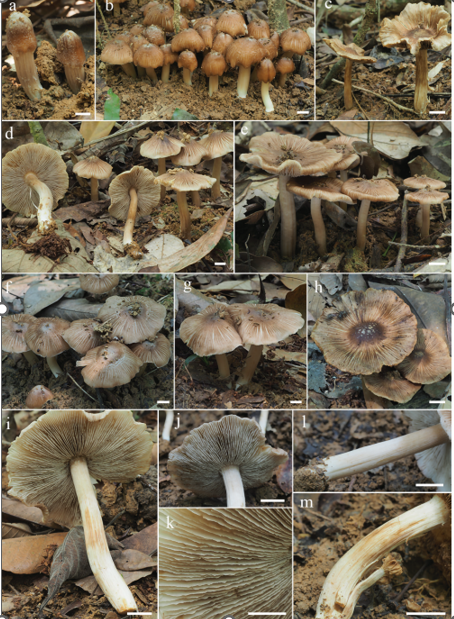Ophiostoma subelongati Z. Wang & Q. Lu 2020
MycoBank MB 830616.
Holotype: China: Heilongjiang province, Hongxing, from Ips subelongatus infesting Larix gmelinii. July 2017, Q. Lu (CXY 2019 – holotype, CFCC 52693 – ex-type culture).
Morphological description
Sexual morph not observed. Asexual morph: hyalorhinocladiella-like. Hyalorhinocladiella-like morph: conidiogenous cells arising directly from superficial hyphae, (11.5–) 12.5–27 (− 28) × 2–3 μm. Conidia hyaline, smooth, elliptical, aseptate, (4.5–) 5.5–7 (− 8.5) × 2.5–3.5 (− 4) μm. Cultures: Colonies on 2% MEA at 25 °C reaching 61mm diam. in 5 d, initially hyaline, the colonies edge thins radially, then from the centre of the colonies to the periphery it becomes brownish grey and develops superficial mycelium on the agar. Optimal temperature for growth is 30 °C; no growth observed at 5 °C or 40 °C.
Habitat: L. gmelinii or L. olgensis pure plantation.
Ecology: Isolated from Ips subelongatus infesting dying Larix gmelinii and L. olgensis.
Distribution: Inner Mongolia Autonomous Region and Heilongjiang province, China.
GenBank Accession: ITS/LSU MK748200; β-tubulin gene MN896055; EF-1α MN896064; calmodulin gene MN896092
Notes: Ophiostoma subelongati colonies gradually turned brownish grey from the centre, but the O. hongxingense colonies centre turned dark olivaceous.
Reference: Wang Z, Liu Y, Wang HM et al. (2020) Ophiostomatoid fungi associated with Ips subelongatus, including eight new species from northeastern China
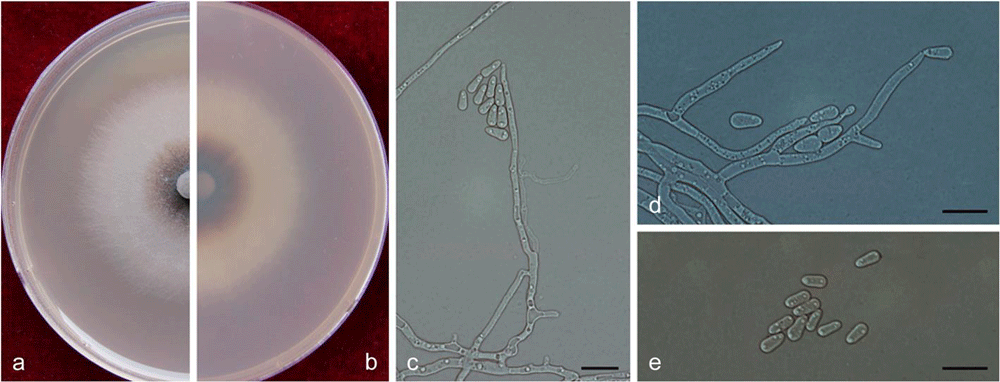
Ophiostoma subelongati. Morphological characteristics of O.subelongati (CFCC 52693). a–b. Five-day-old cultures on 2% MEA; c–e. Hyalorhinocladiella-like asexual morph: conidiogenous cells and conidia. Scale bars: c–e = 10 μm


